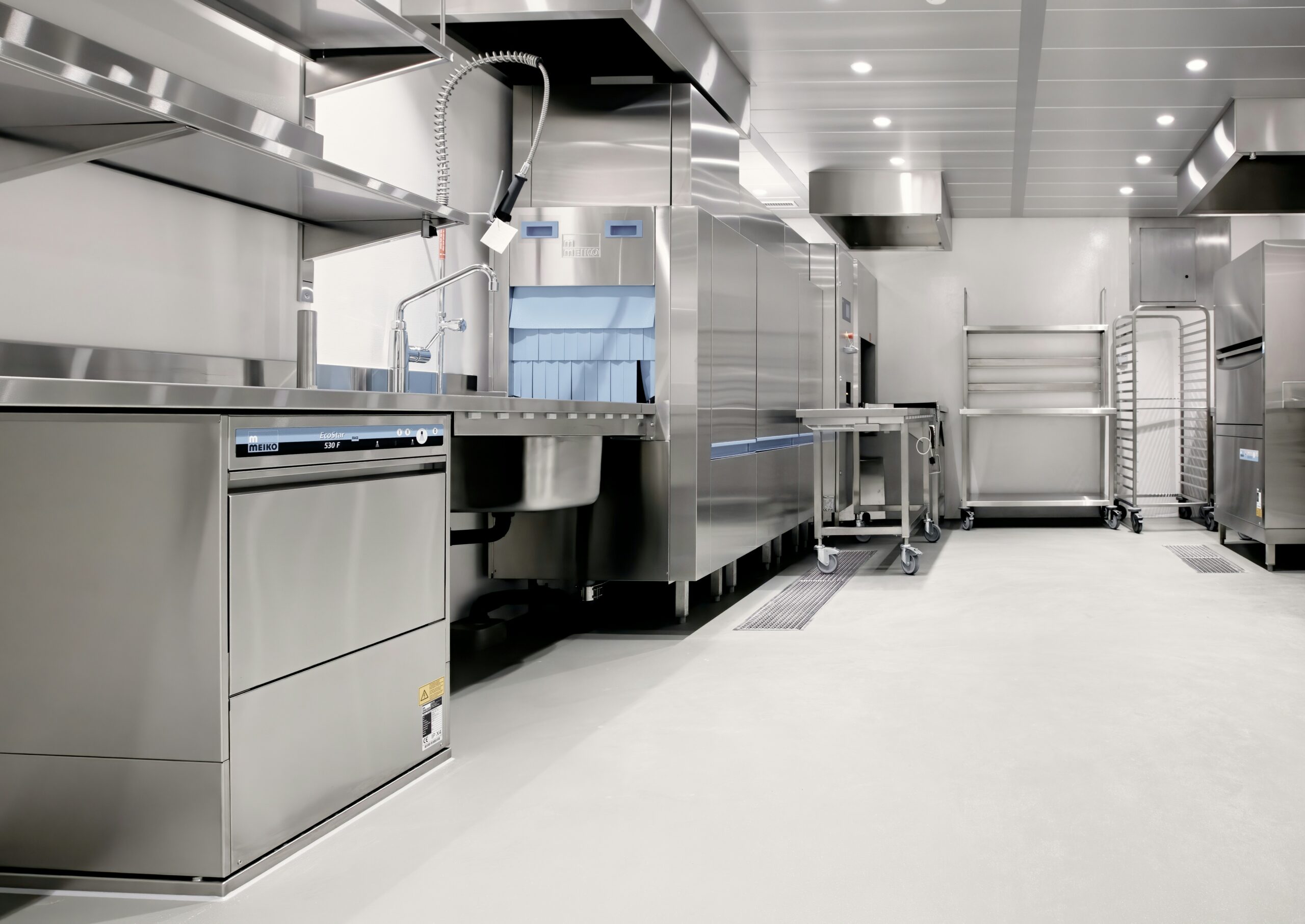- Introduction to Epoxy Floors
- Understanding the Properties of Epoxy Flooring
- Daily Cleaning Tips for Epoxy Floors
- Deep Cleaning and Maintenance Routines
- Preventative Measures for Epoxy Floor Longevity
- Repairing and Restoring Epoxy Floors
- Seasonal Maintenance Considerations
- Choosing the Right Cleaning Products for Epoxy Floors
- Conclusion
Introduction to Epoxy Floors
Epoxy floors are a type of flooring system that consists of a resin and a hardener. When these components are mixed together, they undergo a chemical reaction, resulting in a strong and durable surface. This flooring option has gained popularity in various settings due to its numerous benefits, which include resilience, aesthetic appeal, and low maintenance requirements. The versatility of epoxy flooring makes it suitable for both residential and commercial applications.
The composition of epoxy floors allows them to withstand heavy traffic and harsh conditions, making them an ideal choice for environments such as warehouses, garages, retail spaces, and even residential kitchens. Its seamless nature prevents the accumulation of dirt and bacteria, promoting a cleaner and more hygienic surface. Additionally, epoxy floors are available in a variety of colors and finishes, allowing property owners to customize their space according to their design preferences.
Proper maintenance of epoxy floors is essential for maximizing their lifespan and preserving their aesthetic qualities. While epoxy surfaces are known for their durability, they can still be susceptible to wear and tear if not cared for appropriately. Regular cleaning, timely repairs, and adherence to proper usage guidelines are crucial in extending the life of an epoxy flooring system. Ignoring maintenance can lead to issues like fading, chipping, or peeling, which will detract from both the appearance and functionality of the flooring.
In conclusion, understanding the composition and benefits of epoxy floors is critical for anyone considering this flooring option. A commitment to proper upkeep will ensure that these surfaces remain in optimal condition, providing both aesthetic and practical benefits over time.
Understanding the Properties of Epoxy Flooring
Epoxy flooring is increasingly favored among homeowners and commercial property owners due to its remarkable characteristics and benefits. One of the most prominent features of epoxy flooring is its durability; it can withstand heavy foot traffic and the movement of machinery, making it an ideal choice for industrial spaces as well as garages and workshops. This resilience is primarily attributed to the chemical composition of epoxy, which consists of a thermosetting resin that hardens into a tough surface. Consequently, epoxy floors can last for numerous years when maintained adequately, maintaining their integrity under varying conditions.
Another significant advantage of epoxy flooring is its resistance to stains and chemicals. Unlike traditional flooring materials that may absorb spills, epoxy surfaces offer a protective barrier that typically repels oils, grease, and various chemicals. This resistance ensures that even in environments exposed to harsh substances, the flooring retains its pristine appearance, minimizing the need for extensive cleaning and restoration. Such properties make epoxy particularly suitable for settings like warehouses, laboratories, and manufacturing plants where exposure to potent chemicals is common.
Aesthetic appeal is also a vital characteristic of epoxy floors. The glossy finish enhances the visual brightness of a space, creating an inviting atmosphere. In addition to its sleek appearance, epoxy flooring can be customized with an array of colors, patterns, and textures, allowing homeowners and business owners to tailor their flooring options to suit their aesthetic preferences and branding needs. This versatility in design further promotes the popularity of epoxy flooring across diverse settings.
In understanding the properties of epoxy flooring—its durability, stain and chemical resistance, and aesthetic versatility—homeowners and business owners can recognize the importance of specific maintenance practices aimed at preserving these features. Such knowledge is essential to maximize the longevity and overall performance of epoxy floors.
Daily Cleaning Tips for Epoxy Floors
Maintaining the pristine condition of epoxy floors requires daily cleaning practices that are both effective and gentle on the surface. Epoxy flooring is renowned for its durability and aesthetic appeal, but it is crucial to adopt proper cleaning routines to prolong its life span. First and foremost, it is advisable to use a soft-bristle broom or a dust mop to regularly remove dirt, dust, and debris. This simple action can prevent scratches and keep the surface looking immaculate.
When dealing with spills or stains, it is essential to address them promptly. For most common spills, a mixture of warm water and mild dish soap can be used. Apply this solution with a soft cloth or mop, gently wiping the affected area. Avoid cleaning agents that contain ammonia, bleach, or acidic components, as they can potentially damage the epoxy finish. Instead, consider using pH-neutral cleaners specifically designed for epoxy surfaces, which are widely available in the market.
For more stubborn stains, a mixture of baking soda and water can be effective. Create a paste, apply it to the stain, and let it sit for a few minutes before wiping it away with a damp cloth. This method not only cleans but also helps maintain the shine of the floor. Additionally, using a microfiber mop for regular cleaning will ensure that the epoxy surface is not scratched while also enhancing its reflective qualities.
Finally, it is crucial to avoid using wax or abrasive pads on epoxy flooring, as these can lead to surface degradation. By consistently following these daily cleaning tips and utilizing the right tools, homeowners can successfully maintain the longevity and beauty of their epoxy floors. Regular upkeep will ensure that the epoxy remains as vibrant as the day it was installed.
Deep Cleaning and Maintenance Routines
Maintaining the aesthetic appeal and durability of epoxy floors requires a commitment to regular and deep cleaning routines. While daily cleaning can often involve simple sweeping or mopping, deeper cleaning should be performed at least once every three to six months, depending on foot traffic and usage. Establishing a consistent schedule ensures that dirt, grime, and more stubborn stains do not set in and compromise the integrity of the flooring.
When preparing for a deep clean, it is advisable to use specialized cleaning agents that are not abrasive to the epoxy surface. pH-neutral cleaners are ideal as they effectively remove contaminants without damaging the flooring. Avoid using harsh chemicals or solvents that can cause discoloration or degradation of the epoxy coating. Mixing warm water with an appropriate cleaner is often sufficient to achieve a thorough clean.
For tough stains or scuffs, one effective method involves using a non-abrasive scrub pad in conjunction with the cleaner. This technique allows for the removal of more persistent marks without scratching the surface. Additionally, addressing areas with scratches is crucial for maintaining the floor’s appearance. Light scratches can often be buffed out using a fine-grit sanding pad, followed by the application of a polishing compound specifically designed for epoxy surfaces.
Beyond cleaning, maintaining the smoothness of epoxy floors includes regular inspections for chips or peeling areas. If such issues are present, prompt repair is necessary to prevent further deterioration. By adhering to these deep cleaning and maintenance routines, homeowners and professionals can ensure that their epoxy floors retain their visual appeal and longevity, effectively resisting the effects of everyday wear and tear.
Preventative Measures for Epoxy Floor Longevity
Maintaining the longevity of epoxy floors involves a strategic approach to preventative care. One of the simplest yet effective measures is to use mats or rugs in high-traffic areas. These mats act as barriers, capturing dirt and debris before they can scratch the surface of the epoxy. It is advisable to place mats at entry points and other busy areas within the space, as they can significantly reduce wear and tear on the flooring.
Another important consideration is the avoidance of sharp objects that could potentially damage the epoxy surface. Regularly monitoring the environment for items such as metal tools, rocks, or heavy equipment is essential. When moving furniture or appliances, it is prudent to lift rather than drag them across the floor. This practice can help eliminate the risk of scratches and dents, thereby maintaining the aesthetic appeal and integrity of the epoxy finish.
Additionally, employing furniture pads can provide an extra layer of protection for your epoxy flooring. These pads are designed to be placed under the legs of furniture and can substantially minimize scratching and gouging that might occur when items are moved. Choosing quality pads that are suitable for heavy furniture is essential, as cheaper alternatives may not offer adequate protection. Moreover, these pads should be checked regularly to ensure they are not worn down and are providing the necessary cushion between the furniture and the epoxy surface.
It is also beneficial to establish a routine cleaning schedule. Regular sweeping and mopping with suitable cleaning solutions can help maintain the glossy finish of epoxy floors while preventing the accumulation of abrasive agents. Incorporating these preventative measures into your maintenance plan will undoubtedly contribute to extending the life of your epoxy flooring and preserving its aesthetic for years to come.
Repairing and Restoring Epoxy Floors
Epoxy floors, known for their durability and aesthetic appeal, can experience wear and tear over time. Common issues include scratches, peeling, and discoloration. Prompt attention to these problems is essential to maintain the overall integrity and appearance of the flooring. Understanding the nature of the damage will aid in deciding whether to undertake repairs personally or seek professional intervention.
Minor scratches and scuffs are often manageable through simple DIY solutions. For instance, using a floor polish designed for epoxy surfaces can effectively diminish the visibility of superficial marks. Additionally, a thorough cleaning with a mild detergent can restore shine and vibrancy, making the flooring look new again. If the scratches are more pronounced, using a fine sandpaper followed by a suitable epoxy repair kit can provide an effective remedy. Applying a fresh layer of epoxy to the damaged areas not only fills in the scratches but can also blend seamlessly with the surrounding surface.
However, more severe issues, such as significant peeling or large cracks, may warrant professional restoration services. Such problems can indicate underlying issues, such as moisture intrusion or improper installation. Professionals have access to advanced techniques and materials that ensure a thorough restoration. Their expertise can also prevent future issues by addressing the root cause of the damage.
When deciding between DIY repairs and professional help, consider the extent of the damage, your skill level, and the tools available. For minor damages, taking a hands-on approach can be both satisfying and cost-effective. Conversely, for pervasive issues that compromise the functionality or safety of the floor, seeking professional assistance is advisable. Ultimately, understanding the specific problems your epoxy floor presents will enable you to make informed decisions regarding its repair or restoration.
Seasonal Maintenance Considerations
Maintaining epoxy floors requires careful attention to seasonal changes, particularly in areas prone to harsh weather conditions. The first step for optimal maintenance is to recognize how varying climates impact the integrity of epoxy surfaces. In regions experiencing cold winters, the risk of ice accumulation is significant. For these climates, it is advisable to use de-icing agents that are specifically formulated to be safe for epoxy floors. Avoiding rock salt, which can cause damage to the flooring by creating pitting or discoloration, is crucial.
In contrast, warmer climates necessitate a different set of maintenance practices. High temperatures can lead to the expansion of epoxy materials, which may result in surface cracking if not properly addressed. To mitigate damage, regular inspections for cracks and areas of wear should be conducted, particularly following seasons of extreme heat. Applying a UV protective topcoat can further enhance durability by shielding the floor from harmful sun rays, thus prolonging its life.
Throughout the year, maintaining a regular cleaning schedule will help remove dirt and debris, which can impact the luster of the epoxy surface. Use a mild detergent mixed with water for routine cleaning; this will effectively remove stains without damaging the flooring. In addition, consider applying a periodic sealant that is specifically designed for epoxy floors. This preventative measure will serve to protect against moisture ingress, particularly during rainy seasons.
Furthermore, in regions with significant seasonal changes, it is beneficial to check for temperature fluctuations and humidity levels, as both factors can affect the performance of epoxy coatings. Homeowners are encouraged to monitor these conditions and adjust maintenance accordingly. By implementing these seasonal maintenance strategies, you can ensure that your epoxy floors remain in excellent condition year-round.
Choosing the Right Cleaning Products for Epoxy Floors
Maintaining the aesthetic appeal and durability of epoxy floors requires a careful selection of cleaning products. Epoxy flooring is known for its resilience and gloss, but the wrong cleaning agents can cause significant damage over time. It is essential to use non-abrasive, pH-neutral cleaners that are specifically designed for use on epoxy surfaces. These products help preserve the integrity of the floor without compromising its shiny finish.
When selecting cleaning solutions, prioritize those that are free from harsh chemicals. Acids, ammonia, and solvents can erode the protective layer of the epoxy, leading to discoloration, dulling, or peeling. Instead, opt for mild detergents and specialized epoxy floor cleaners that effectively remove dirt without risking harm. Products that list ‘safe for epoxy’ on their label are an excellent choice, as they have been formulated to meet the specific needs of this flooring type.
In addition to cleaning solutions, consider using tools that reduce the likelihood of scratching the floor surface. Soft microfiber mops, non-abrasive pads, and gentle scrub brushes are preferable over stiff bristle brushes or abrasive pads that can leave marks. Given that water can contribute to slip hazards on epoxy, it is advisable to dry the floor promptly after cleaning to maintain safety and appearance.
It is also beneficial to read manufacturer recommendations for cleaning products to ensure compatibility with the type of epoxy flooring installed. Regular maintenance with the right products will not only extend the lifespan of the floor but also help maintain its aesthetic appeal. Keeping these considerations in mind will lead to a successful and effective cleaning routine for your epoxy floors.
Conclusion
The importance of regular maintenance for epoxy floors cannot be overstated. These durable and resilient surfaces offer significant advantages for a variety of settings, from residential spaces to commercial environments. However, like any flooring solution, their longevity and performance rely heavily on consistent upkeep. Regular maintenance ensures that the flooring remains visually appealing and fully functional, thus preserving its aesthetic and practical benefits.
Investing time in routine cleaning and maintenance activities can significantly enhance the lifespan of your epoxy flooring. Simple practices such as sweeping or dust mopping to remove debris, followed by occasional deep cleaning using pH-neutral cleaners, can prevent dirt and grime buildup. Additionally, promptly addressing any spills can avoid potential staining and degradation of the flooring material. Over time, these proactive measures will protect your investment, cutting down on repair costs and extending the life of the epoxy floor.
Establishing a maintenance schedule is a prudent approach to ensure ongoing care for your epoxy floors. Depending on the traffic the area receives, the frequency of upkeep may vary; however, a regular timetable will help mitigate neglect. Moreover, incorporating periodic inspections to identify any early signs of wear will allow for timely interventions, further enhancing durability. By prioritizing regular maintenance, you not only uphold the beauty of your flooring but also maintain its functionality, ensuring it remains an asset in your property for years to come.







